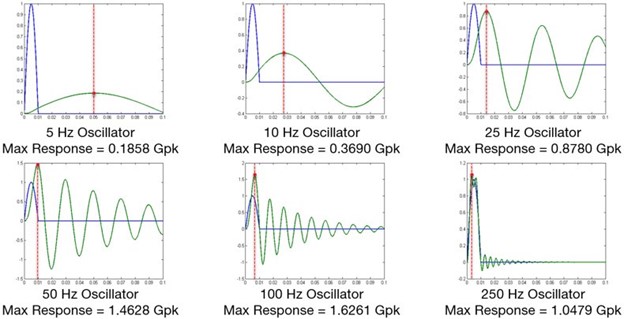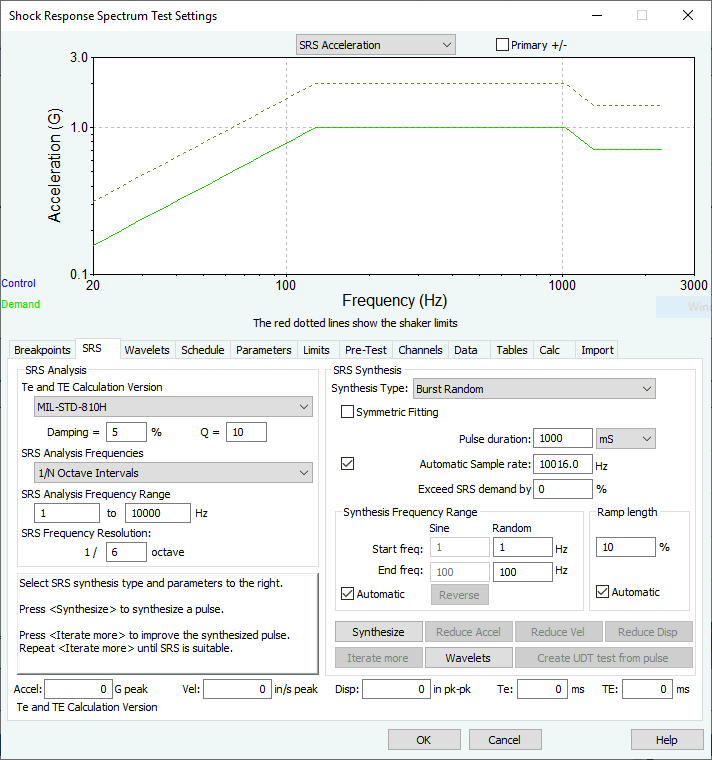SRS Test Definitions
December 30, 2022
Introduction
Control & Analysis
Back to: Shock Response Spectrum (SRS)
The following definitions are fundamental to shock response spectrum (SRS) testing. Most test standards will define the parameters for test profile development.
Response Spectra
- Response spectrum: a plot of the maximum response as a function of oscillator frequency for a set of single-degree-of-freedom (SDOF) damped oscillators subjected to the same base excitation.
- Required response spectrum (RRS): the response spectrum provided by the test specification.
- Test response spectrum (TRS): the response spectrum from the time history of the shaker table motion.
Waveform Measurement
- Zero-period acceleration (ZPA): the acceleration of the high-frequency, non-amplified portion of the response spectrum. ZPA corresponds to the maximum peak acceleration of the time history from which the spectrum is derived. Also referred to as “peak acceleration.”
- Cutoff frequency: the frequency in the response spectrum where the ZPA asymptote begins. Beyond the cutoff frequency, the SDOF oscillators exhibit no amplification of motion and indicate the upper limit of the frequency content of the analyzed waveform.
- Pseudo-velocity: the natural frequency multiplied by relative displacement. If the relative displacement is expressed as an equivalent static acceleration, pseudo-velocity equals the equivalent static acceleration divided by natural frequency. Pseudo-velocity is approximately absolute acceleration divided by natural frequency. See the pseudo-velocity to SRS acceleration calculator.
Shock Response Spectra
- Primary/initial SRS: the SRS of the maximum absolute response during excitation.
- Residual SRS: the peak response after the excitation has completely decayed.
- Negative SRS: an SRS with only the maximum negative response.
- Positive SRS: an SRS with only the maximum positive response.
- Maximax SRS: an SRS consisting of the maximum absolute response recorded as a function of the system’s natural frequency. Many SRS plots provided by test standards are the maximax response to a complex shock environment.
The following figure displays the maximax response of individual oscillators to a 1G, 10mS half-sine pulse. At some frequencies, the peak response is greater than the input vibration.

The maximax response (Gpk) of six SDOF oscillators with different natural frequencies.
Test Standards
There are additional requirements for the SRS in test specifications, including the duration of the transient event, waveform type, and peak acceleration. The following are the SRS settings in the VibrationVIEW software for synthesis and analysis.

